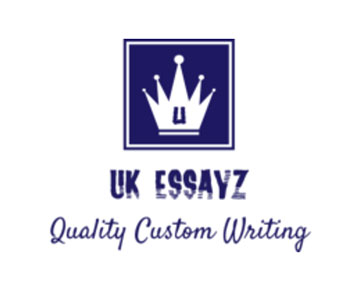The Assignment Brief:
Select one multinational enterprise (MNE) with any nationality that is active in one or more
than one industry. This MNE can be small, medium, large or very large. This company can
be famous or unknown, but the information about this MNE should be publicly available in
English. Collect required data about this company and its environment from valid sources
such as the company’s annual reports, the company’s press release, the company’s
website, industry databases (such as Mintel, Euromonitor Passport, Orbis, Capital IQ,
Statista or GMID), academic case studies, WTO, World Bank, IMF, OECD, UNCTAD’s
Global Investment Trends Monitor, market research reports or news by reliable
broadcasters.
You need to write an analytical report regarding this company that covers the
following strategic issues:
A) Analyse the outer-organisational environment of this company in one of the
countries where it is present to identify the major external factors that influence this
company
B) Suggest corporate-level strategies for the company
C) Propose business-level strategies for this company
It is expected from you to use any theoretical frameworks or theoretical discussions that can
help you in strategic analyses of your chosen company. So, you need to combine theoretical
discussions with the factual data about the company. Every theoretical discussion and every
provided information about the country or the company should be supported by relevant
referencing (citation) from valid academic, international or the company sources. Thus it is
normal to expect citations in every paragraph except in the Introduction and Conclusion
sections.
Recommended Structure:
The structure of your work has its own mark. There is no need for an executive summary
for this report. The recommended structure for this assessment is as follow.
Coversheet: Use the usual template for coversheet for assignment. This coversheet is
available in SurreyLearn in the Assessments folder.
Table of Contents: Provide the list of headings and their page number in one separate page
from the cover sheet and the introduction.
1. Introduction:
In one paragraph say what are you going to discuss in your work. You may mention the
list of main headings would be discussed in your work.
2. Background to the chosen company:
In one or two paragraphs, give some short information about what your chosen company
does and why you selected this company. You may provide some graphs or/and tables to
show the company’s market share and position among the competitors in the same
industry. Indicate in how many countries this company do business. If you can find, you
might write the company’s vision, mission, and objectives. Do not worry if you cannot find.
3. Analyse the outer-organisational environment of this company in one of the
countries where it is doing business
3.1. Start this section by brief mentioning of 3 to 9 techniques (theoretical frameworks)
that can be used in analysing external environment of an organisation. Your mark would
be increased if you identify the similarities and differences that are exist among these
techniques (theoretical frameworks). You might use a table to compare these theoretical
frameworks to each other (for example, each framework can be mentioned in one of the
columns [or rows] of this table) and the written words in the table do not count as part of
the 3000 words limit. Teaching and reading materials from week 2 are directly relevant to
the topic of this section but do not limit your work to lecture notes in this week.
3.2. Use any suitable theoretical framework for environmental analysis such as Porter’s
Five Forces to analyse the external environment of the selected MNE either in its home
country or any other countries that this company does business there. You are allowed to
use more than one theoretical frameworks for analysing external environment of the
MNE. It is much better to use only one or two outer-organisational analysis tools for doing
an in-depth analysis instead of using two or more analysis techniques for superficial
analysis. Criticise the chosen frameworks. Focus on only or mainly industry-related
factors that may have noticeable effect on effective formulation and development of the
global strategy in this company. If your selected company is activated in more than one
industry, you need to analyse only one industry that is the main source of the income for
this company. There is no need for analysing inside of the company. So, do NOT waste
your words and time for internal analysis of the firm because it does not have any marks.
4. Suggest corporate-level strategies for the company
4.1. First you may explain briefly main corporate-level strategies. It would be helpful if you
compare two or more classifications of the corporate-level strategies by two or more
different scholars such as the classification by Wheelen et al. (2017) and the one by
Dessler (2016). Using a table would assist you in this comparison (you may allocate one
column [or row] in the table for each classification) and the written words in the table do
not count as part of the 3000 words limit. Try to criticise these strategy classification
frameworks. Teaching and reading materials from week 5 are directly relevant to this
topic but do not limit your work to lecture notes in this week.
4.2. Then by considering the results of the outer-organisational environment, you are
expected to suggest the most suitable corporate-level strategies for this organisation. You
should justify your suggested strategies by considering the external environment as well
as functions and impacts of the proposed strategies. You would receive a higher mark if
you propose one or two corporate-level strategies from each of the classifications of the
3
corporate-level strategies. For instance, you may recommend one or two corporate
strategies that mentioned by Wheelen et al. (2017) AND one or two corporate strategies
that are stated by Dessler (2016). Some of your suggested corporate-level strategies can
be similar to the strategies that are already being used by the company or the strategies
that have not been used. I want to see your ability to recommend appropriate corporatelevel strategies to this organisation, so you will receive a fail grade if you just describe
the current corporate-level strategies of this company.
5. Propose business-level strategies for this company
5.1. Initially discuss briefly main business-level strategies. Try to compare two or more
classifications of the business-level strategies by two or more different scholars such as
the Generic Strategies by Porter (1980) and the Ansoff’s Matrix. Try to criticise the
frameworks. Using a table would assist you in this comparison (you may allocate one
column [or row] in the table for each classification) and the written words in the table do
not count as part of the 3000 words limit. Teaching and reading materials from week 6
are directly relevant to this topic but do not limit your work to lecture notes in this week.
5.2. After that you should propose the most suitable business-level strategies for this
company based on A) the outputs of analysing the outer-organisational environment, as
well as B) your suggested corporate-level strategies. It is necessary to have direct and
meaningful relationship between the business-level strategies that you are recommending
and the corporate-level strategies that you suggested for this organisation. To receive a
better mark, you may suggest one or two business-level strategies from each of the
classifications of the business-level strategies. For example, you may suggest one or two
business strategies from Porter’s Generic Strategies AND one or two business strategies
from the Ansoff’s Matrix. Some of the recommended business-level strategies can be
similar to the strategies that are already being used by the company or the strategies that
have not been used. The intention is assessing your ability to suggest suitable businesslevel strategies to this company, thereby you will receive a fail grade if you just describe
the existing business-level strategies of this MNE.
6. Conclusion:
Summarise your findings and suggestions in one or two paragraphs. You might use a
table to help you in summarising your findings and recommendations.
References: It is mandatory to have a full list of all sources you used directly in your work.
Please do not mention the sources that you did not use directly in your work. Referencing
should follow the Harvard Referencing system only.
Appendices: It is better not to have any appendices. Every necessary information,
discussions, tables or graphs should be provided within the main text between the
introduction and the conclusion sections. If you use an appendix, remember that the
contents in appendix do not have any mark. I will not read what you put in the appendices







